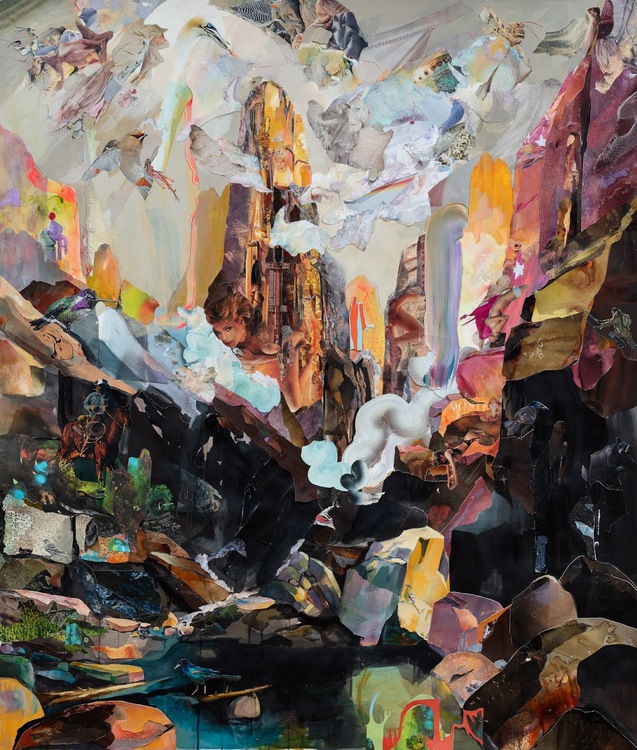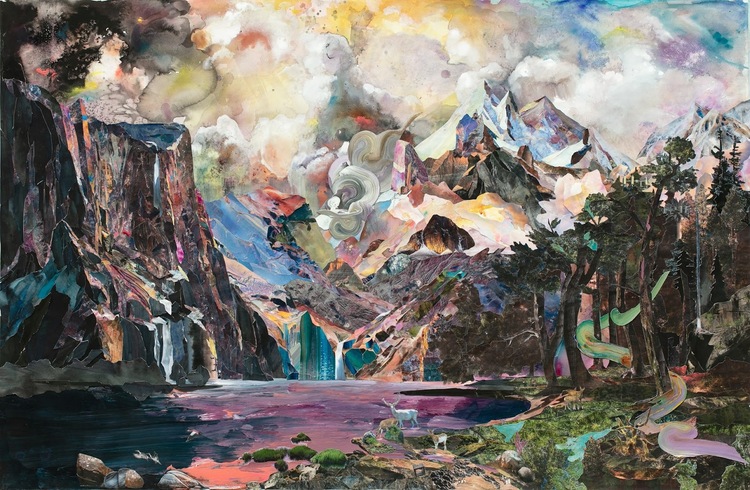Libby Barbee: Strange Birds and American Wet Dream
My name is Libby Barbie and I'm a multimedia artist residing in Westminster, Colorado. I grew up in the rural community of La Junta in southeastern Colorado, and my artwork deals with the Western American landscape and the political and social implications of American Frontier Myth. I work in a lot of different media, including sculpture, installation, painting, printmaking, and collage. Through collage specifically, I'm interested in deconstructing and reconstructing both literally and figuratively.
Historical images of the Western American landscape and exploring the ways in which landscape painting is both a result of and participates in the creation of national mythology and American identity. In this current body of work, I'm specifically exploring the idea of seduction as it relates to the American landscape and the American myth, and I'm thinking about how American masculinity is surfacing as an important theme in this particular political moment, as well as how the concept of American, which is increasingly being redrawn as white and masculine, draws from a long historical lineage that directly ties American exceptionalism and American identity to the activity of taming and subjugating the American landscape.
The two large collages in this exhibition are direct references to paintings by Hudson River School painter Thomas Moran. It's important to understand that 18th and 19th century American landscape paintings were not just documentation of the American West in the way that we now use photography. Rather, they were idealized and exaggerated amalgamations that were used to demonstrate the wild and sublime nature of the American landscape, and by proxy, create a case for the exceptionalism of the American White European male pioneer who could tame it. So these collages are directly referencing this longstanding heroic American landscape tradition, but also complicating it by bringing in all of this other stuff that complicates the narrative and in part alludes to those things that the American myth implies.
That are not always made evident in our discourse or representations. These, of course, include things like racism, sexism, and the exploitation of people and the landscape.
-
Alpert + Kahn: Arrangements Series
-
Sarah Darlene: When the Cloud Becomes the Rain II
-
Sean O'Meallie: Prism Tattoo
-
Libby Barbee: Strange Birds and American Wet Dream
-
Yazz Atmore: Zelma
-
Yazz Atmore: Michelle
-
Yazz Atmore: Sharon
-
Yazz Atmore: Tanya
-
Yazz Atmore: Ann
-
Yazz Atmore: Willie Mae
-
Yazz Atmore: Margaret
-
Yazz Atmore: Elssa
-
Yazz Atmore: Genat
-
Janice McDonald: ThroughLines Series
-
Janice McDonald: Unboxed Series
-
Janice McDonald: Abstract Series
-
Janice McDonald: Collage Diaries

